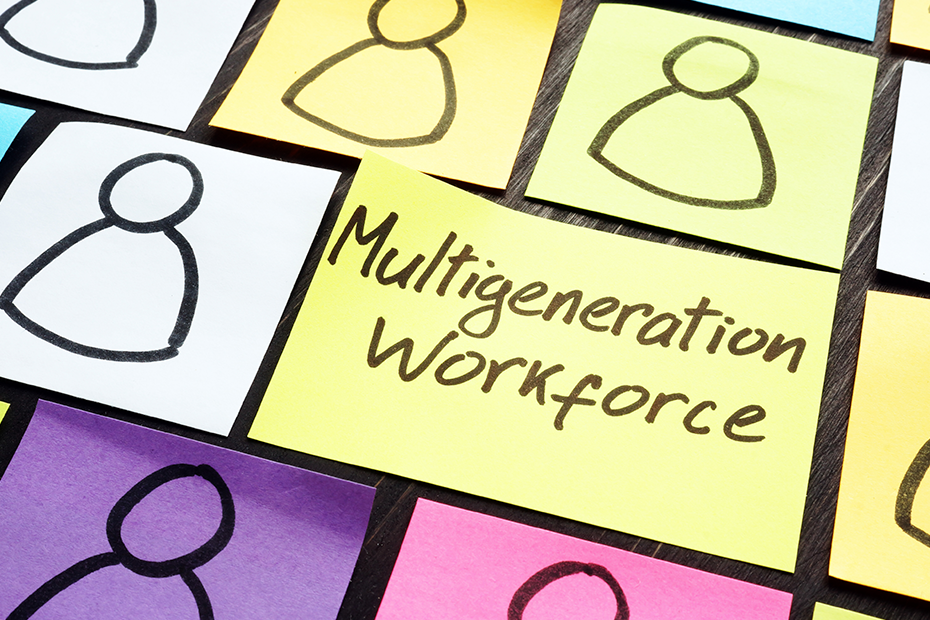When thinking of a diverse and inclusive workplace, one overlooked aspect in our fast-paced, tech-savvy industry is age.
While we may have the best of intentions when striving to build variety into a team or organizational culture, generational diversity isn’t always a top priority or focus. But it should be!
So, if you’re thinking, “Oh, crap. Am I guilty of excluding certain generations from joining my team?” Then you’re in the right place.
Let’s dig into generational diversity and why it can do wonders for helping your workplace thrive.
What is Generational Diversity?
Generational diversity in the workplace refers to the idea that people from different generations work together at any given time.
Generational diversity can bring different perspectives and strengths to an organization, and leveraging the potential of all employees, regardless of their age, can make your team dynamic and highly effective.
Generations in Today’s Workforce
According to the Department of Labor, over 99% of the workforce will include Generation Z, Millennials, Generation X, and Baby Boomers by 2025.
We’ve combed through a bunch of research reports (so you don’t have to) to discover what sets each generation apart when it comes to work. Here’s what we learned.
Baby Boomers (1946 – 1964)
The Baby Boomer generation thrives on recognition for their achievements and brings great dedication to the companies hiring them. Hardworking, in-person, and basking in their trophy wall while their PTO rolls over to the next fiscal year sums up the Boomer crew.
So, if you’re Gen Z or a Millennial, press pause before jumping to, “Okay, Boomer.” Boomers have a lot to offer their younger counterparts.
Generation X (1965 – 1980)
Up next are the Gen X-ers, or should we say DIYers? This generation embodies an adaptable, resourceful attitude. They’re independent and value a positive work-life balance.
Gen X-ers also know their way around tech, but don’t rely on it. Their people skills shine, making them excellent collaborators.
Millennials (1981-1996)
Okay, y’all. We’re not going to sugar coat it: This generation has seen some sh*t.
Entering the workplace after a mix of tragic events while carrying mountains of crippling student debt, Millennials are resilient (despite the media-driven stereotypes labeling them entitled or lazy).
Millennials are tech-savvy, know what they want, and remain value-aligned. They also prioritize their vacation time–and we think they (and everyone) deserve it.
Generation Z (1995-2015)
Last but not least, we have Gen-Z. This generation often gets lumped in with Millennials by older generations, but they’re distinctly different. Having grown up with smartphones and the internet, navigating tech is second-nature to them.
When taking a job, Gen-Zers tend to prioritize inclusive and diverse workplaces over any other factor (yes, even money, at times).
Creating a Generationally Diverse Team:
Lessons Learned
At Clever Lucy, we’ve experienced some of these differing generational approaches to work firsthand. Let’s take our fearless leaders, Sara and Keri, for example. Early on, their own generational gap highlighted key learnings that contributed to developing Clever Lucy and who we are as an agency:
Lesson #1 – Defining Internal Structures
With a team spanning varied ages, locations, and experiences, we’ve applied intergenerational learnings to be more adaptable to our team’s communication styles and preferences. For example, we’ve learned what warrants a Slack message versus a phone call over time. While this may seem small, it lays a foundation for learning that can develop into significant impact.
Lesson #2 – Framing Differences as Strengths
Leveraging differences as strengths applies across every facet of work at Clever Lucy. Sara and Keri often laugh over an early realization that they have different habits when it comes to physical or digital resources.
Keri likes to have physical copies of documents because they can come in handy when tech doesn’t do what it’s supposed to. And on the flip side, Sara’s gravitation to keep everything online promotes collaboration and version control.
Lesson #3 – Tailoring Client Communications
This learned adaptability of the Clever Lucy team applies to clients too. It allows us to be fluid and adaptable to our clients’ needs while simultaneously communicating our ways of working with clarity and purpose.
A tailored approach is one key aspect at the heart of what we do.
Lesson #4 – Enhancing Marketing Success
Understanding generational differences at work significantly impacts marketing success. When we tap into different perspectives, desires, and habits of varied generations, we can better tailor our marketing channels to target audiences, no matter their generation or background.
The Bottom Line
While the historical foundation of many generational attributes remains valid, painting with a broad brush and perpetuating stereotypes hinders collaboration.
When we understand we may be operating with unconscious bias, we can break through and learn how to work best with each individual on a team. We all bring strengths and weaknesses to the table, and learning how to complement each other creates a thriving workplace.
At the end of the day, we’re all more similar than we may realize.
Looking to partner with an agency and expand the differing voices shaping your marketing? Take a look at our capabilities or book a 15-minute call to see if we’d be a good fit!
Follow us on LinkedIn for more marketing news, trends, and tips.
